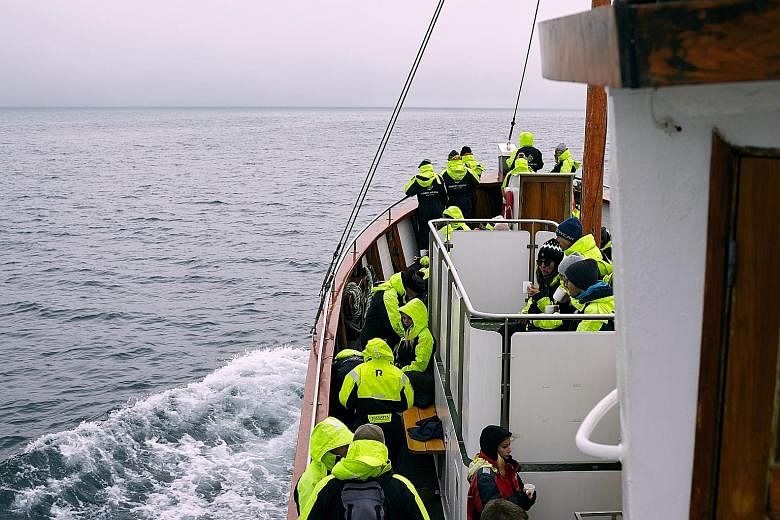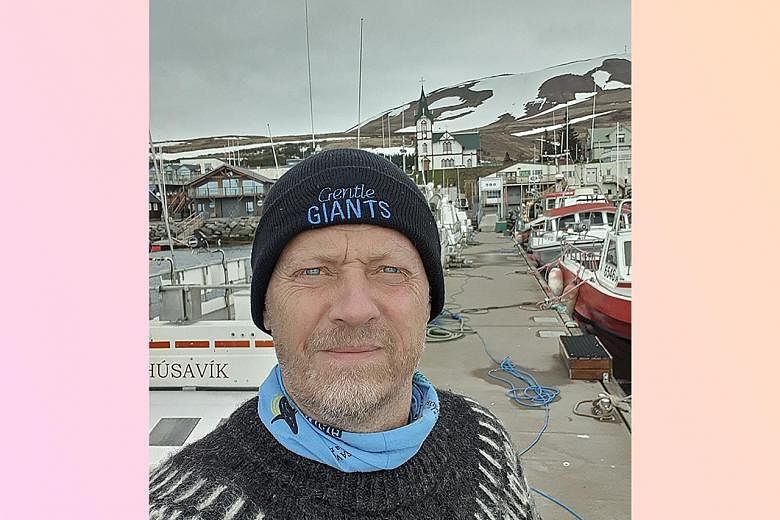I saw a tall spout the other day, about half a mile north, and have been wondering if it was a fin whale or maybe the blue whale. I didn't check... My whale-watching boat, The Apena, was originally built for fishing, and her current purpose is back to basics for the time being.
The vast Skjalfandi Bay, nudging the Arctic Circle, has provided a livelihood for my family of fishermen for the past 150 years.
Given the bleak prospect for tourists, it seems like I am about to add another year to the legacy.
The town of Husavik is the whale-watching capital of Iceland - some say Europe - and my fleet is one of three tour operators. I was first in my family to sail out with binoculars instead of fishing gear, about 20 years and 350,000 passengers ago.
The season starts when the whales finish their migration from winter waters. That was early March this year, around the time Iceland closed its borders.
In my fourth week of fishing, I counted six or eight humpback and minke whales feeding on a school of capelin. All that is missing are the audiences.
Sunny days are the strangest. Sailing into harbour, you expect to see people lined up for tours and dining outside. Back then, you almost needed a navigator's eye to find good parking. I don't miss it just yet, but I do wonder when the time will come again.
Fishing takes my mind off the problems ahead, and there isn't much I can do about them, anyway. What will Iceland without international tourists really look like? I hope at least Icelanders grab the opportunity when the summer holidays begin, to see for themselves.
Meanwhile, the whales will be out there, performing for their friends and the fishermen.


